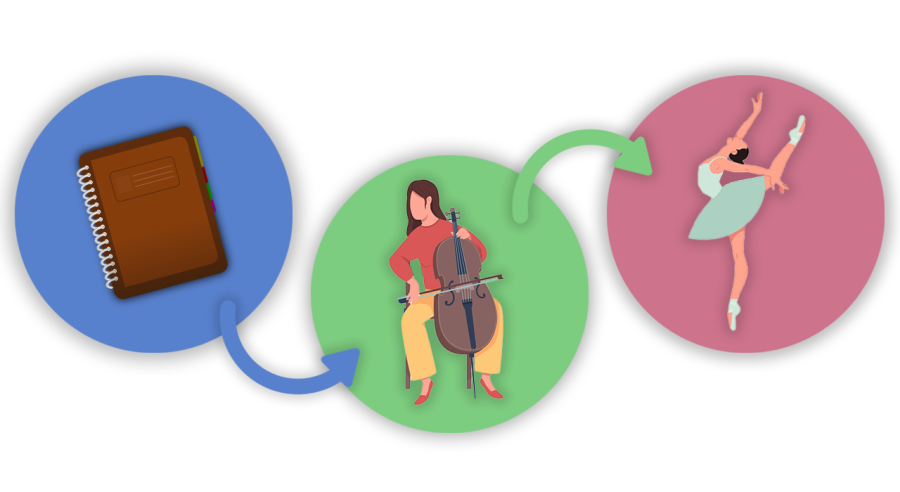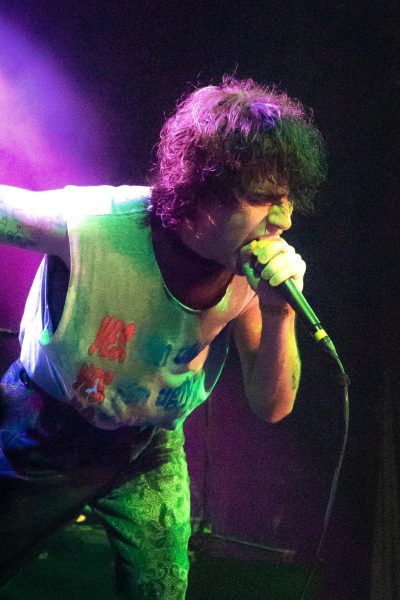COLFA event feature ‘Defining Moments’
Interview with Assistant Professor of Instruction, Jodi Peterson
November 9, 2021
On Nov. 19, the “Defining Moments” Arts Collaboration Showcase will be taking place at UTSA’s Buena Vista Theatre at the Downtown Campus from 7:00 p.m. – 8:30 p.m. Shuttle service will be provided for UTSA students. “Defining Moments” is an interdisciplinary arts project that “sheds light on the accounts of students in the midst of the pandemic.” More than 500 UTSA students across six academic disciplines participated in the collaborative art project to “grapple with and address the impact of COVID-19 on their lives and on the lives of those they love.” This week, we spoke to Jodi Peterson, Assistant Professor of Instruction in the History Department and one of the faculty members leading “Defining Moments.” Below is part one of a two-part feature highlighting how the collaborative art project came to fruition.
Q: “Defining Moments” is an interdisciplinary arts project inspired by students’ experiences amidst the pandemic. What prompted this creative collaboration?
“The idea for “Defining Moments” was born from a tactical team at UTSA. The team got together at the very beginning of the pandemic when we were shifting from in-person to online. They were very concerned about how students were grappling with the changes that were occurring in their lives and [wanted to ensure] they continued to receive the best education that they could — even with all the changes. As professors, each of us were feeling the weight of the moment and wanted our students to have the ability to recognize the historic significance of the moment. As we got together, we thought about the issues at hand and very quickly an idea came up: that we somehow engage our students [in an] experiential learning project, where we have them take on the moment and the projects that relate to that moment … because we were all feeling the same way, we saw the chance to work together. That’s how it came together, and we’re all really excited about it. This is the largest interdisciplinary project that the university has ever done.”
Q: For this project, students “gained insight on the experiences of others, reflected on their own experiences, and created artistic responses.” Why do you think it’s important that students reflect on both their own experiences and those of their peers?
“I think sometimes life is so busy that we don’t get a chance to really sit down and analyze what is happening. Having a project like this allowed the students to take a minute and be retrospective about their own feelings. It’s important at the university for us to be open-minded and to be able to not only understand how we’re feeling and to be able to express that, but to hear how other people are feeling and take that into consideration. It gives us a better sense of empathy and unity amidst our differences. Even though we have those differences, we can still be united.”
Q: Can you tell us more about the process of collecting art for “Defining Moments?”
“Each student would pass the baton from one discipline to the next, which was really neat because the students could listen to each other’s voices and hear how they were feeling. We saw the progression of how it could go from history students writing journal entries, to English students taking those journal entries and writing poetry and prose, to art students creating works of art, to music students creating music, to dance students choreographing dances to that music and finally architecture students creating the backdrop for the whole showcase. Each discipline grew more and more until they were all connected, showing that they were really listening to the voices before them. Library Services has been crucial in collecting and preserving the works. They have the Roadrunner Research Press — an archive — and they’re processing [the project] and keeping it so that our students can reflect on their own work, and generations in the future can look back on this as a primary source … which, as a historian, is really exciting for me!”
Q: Do you think art can help students cope with the stress of both academia and the world at large?
“Definitely! That’s one of the best things about this project: it shows the importance of the disciplines within COLFA and their significance in documenting and preserving historic events. This project had an important “Classroom-to-Career” initiative. As we are preparing our students to enter the workforce, it’s important to show them how they can use the disciplines they’re learning at the university level in the future. “Defining Moments” demonstrates that UTSA can do interdisciplinary projects. It shows that we don’t have to be siloed in our own disciplines, but that we can learn from each other and grow and create by working together with other disciplines.”
Q: This exhibition was designed to “utilize the voices of the community in a creative way to change perspectives and incite a positive transformation.” Can you elaborate on this? What do you hope students — both participants and viewers — get from this project?
“The participants were feeling very isolated and alone during quarantine. At such a time, especially in college, it’s very communal and interactive … so it was a hard transition for a lot of people. This project allowed [student participants] to find community even amidst their isolation. It served an important purpose. Now that we’re doing the showcase, it has significance because it reinforces the historical importance of the event. We’re only a year out from quarantine, but as I go through the work, it really amazes me: what an important historical time we lived in. It will continue to have significance in the future — in five years, in ten years — it will be really important for people to look back and see what life was like during that crucial time.”
Q: Do you plan on hosting any collaborative art projects in the future? If so, how can students get involved?
“Academic Innovation has used our project as a pilot for how to create interdisciplinary projects. They just put out an initiative to collect additional ideas for future interdisciplinary projects, so I think there will be lots more opportunities for students to participate. If students are interested in this project in particular, they are welcome to contact any of the faculty involved. We’ve put a lot of effort into this because we love our students and we love the project, so even though we’re moving past the pandemic time, the historical significance remains, and our experiences continue to be important.”
Q: Is there anything else you’d like to share?
“UT Health was very interested in partnering with us. In fact, they’re going to be at the event and they see art as a really important way to get the message of the medical importance of the vaccine to people. People can feel a disconnection when they hear medical jargon … but when they see art, they experience it at a different level. There will be a pop-up vaccine clinic at the event. Lastly, this was a great opportunity for students to work together, but it has also been such a pleasure to work with other faculty in a way that I wouldn’t have been able to otherwise. The people who I’ve worked with on this project have so much meaning to me now — as friends, not just colleagues. I’ve just really enjoyed the process, working with the students and faculty.”











